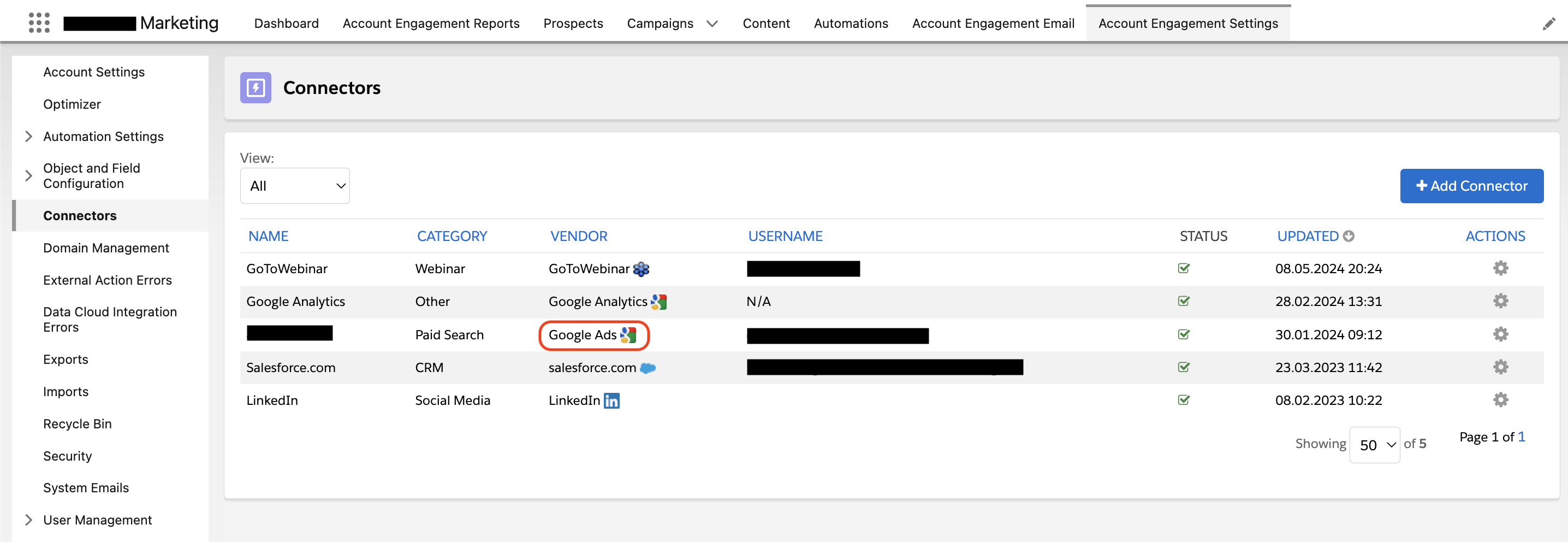"I need to track our Google Ads performance in Pardot, but I'm not sure how to do this."
If this question resonates with you, you're in the right place. As digital marketing becomes increasingly data-driven, connecting your advertising platforms with your marketing automation system is crucial for measuring campaign effectiveness and understanding prospect behavior.
Let's explore how to implement this integration effectively and get the insights you need.
Prerequisites for Integration
Before beginning the integration process, ensure you have these essential components in place:
- Administrative access to your Marketing Cloud Account Engagement instance
- Administrative access to your Google Ads account
- Google Analytics tracking implementation on your website
- Auto-tagging functionality enabled in Google Ads
Setting Up the Integration
Now, let's continue in Pardot with the Google Ads integration.
Google Ads Connector
Follow these steps to establish the connection:
- Navigate to Settings → Connectors in Account Engagement
- Select +Add Connector
- Choose Google Ads from the available options
- Click Create Connector
- Authenticate using your Google Ads administrative credentials
- Input your Google Ads account number
- For manager accounts: Enable Specify a manager account and provide the manager account number
- Complete the configuration by saving your settings

Conversion Tracking
Implement conversion tracking for your Google Ads campaigns:
- Access your hosted marketing forms
- Implement the Google Ads conversion code in the Thank You Code section
- For forms utilizing redirect pages, implement the conversion code on the destination Thank You Page
Understanding Tracking Data
Let's find out how you can track Google Ads data.
Click Tracking Mechanics
- Data synchronization occurs on a 24-hour cycle
- Initial Account Engagement metrics may show lower numbers until synchronization completes
- Click totals encompass both converted prospects and non-converted visitors
Conversion Attribution
Conversion tracking operates based on these parameters:
- Conversions are registered when users interact with conversion-coded pages within 30 days of the initial ad click
- Account Engagement attributes conversions to the original ad click date
- Variation between conversion metrics and unique prospect counts may occur due to different measurement methodologies
Troubleshooting Common Issues
Lastly, if you're facing any issues, have a look at the most common issues and how to fix them.
Connection Issues
Address connection problems by verifying:
- Google Ads credential validity
- Permission configuration accuracy
- Auto-tagging status
- Tracking parameter implementation
Tracking Discrepancies
Resolve prospect tracking issues by checking:
- Google Analytics code implementation
- Campaign parameter configuration
- Domain settings accuracy
Implementation Best Practices
Optimize your integration effectiveness by:
- Conducting regular tracking parameter reviews
- Implementing targeted conversion goals
- Monitoring key performance indicators
- Maintaining current tracking configurations
Need Help?
Our team of Pardot experts is ready to assist you with your Google Ads integration. Whether you're just getting started or experiencing technical issues, we're here to help.
Contact us today to optimize your Pardot and Google Ads integration.